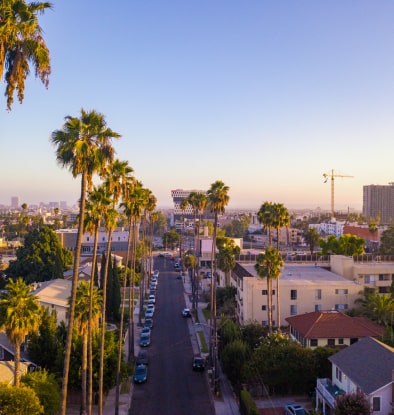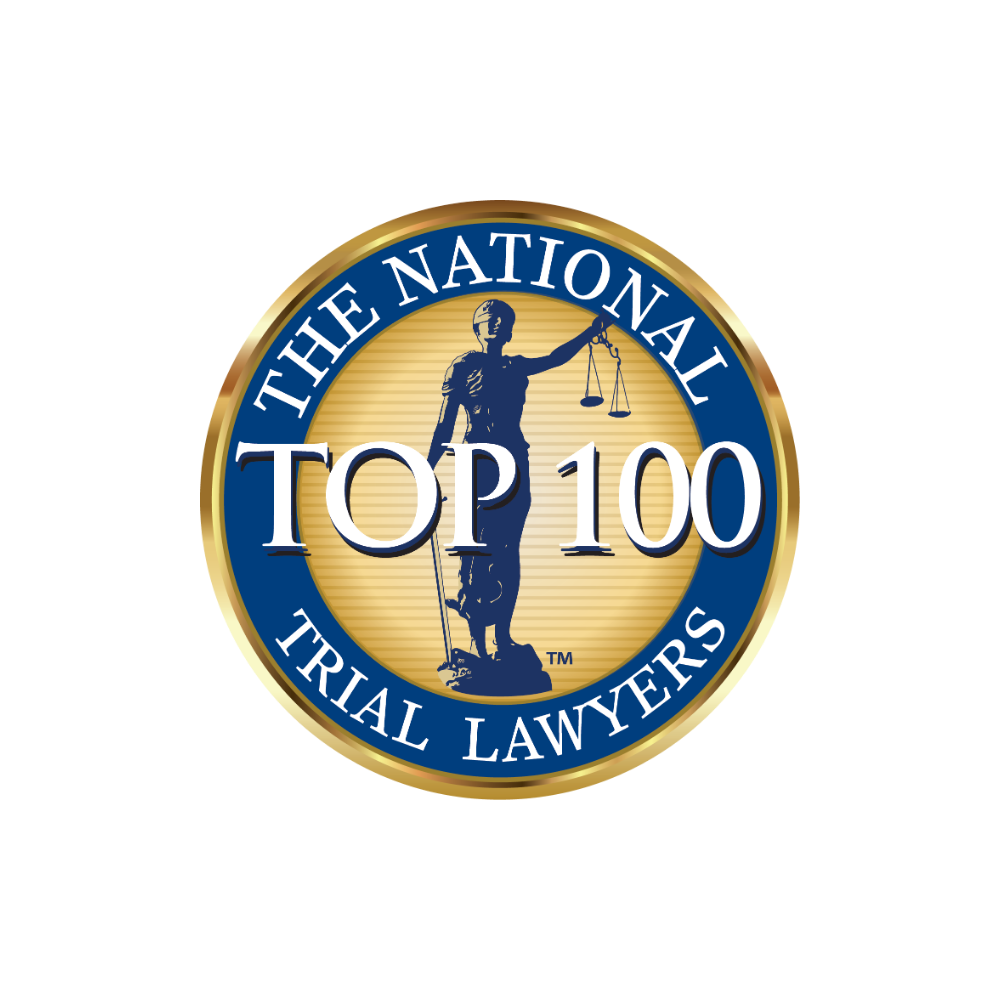At Crown & Stone Law, P.C., we represent victims of rear-end crashes throughout California, from freeway pileups in Los Angeles to stoplight collisions in San Diego and the Bay Area. Our team investigates every detail, from dashcam footage to police reports, to hold negligent drivers and insurers accountable.
According to the California Office of Traffic Safety, rear-end collisions make up nearly 27% of all vehicle crashes statewide, an estimated 135,000 accidents every year. These crashes happen most often on California’s busiest corridors, including the I-5, and US-101, where congestion and distracted driving lead to serious injuries.
Clients describe us as “responsive and diligent… easy to reach, even late at night.” With proven results like a $965,000 settlement after an insurer offered only $45,000, we fight for full and fair compensation, never quick settlements.
What Is a Rear-End Collision?
A rear-end collision occurs when one vehicle crashes into the back of another, usually because the trailing driver was following too closely or failed to stop in time. These accidents can range from low-speed fender benders to high-impact crashes that cause severe injuries.
Under California Vehicle Code §21703, drivers must maintain a safe following distance and “not follow another vehicle more closely than is reasonable and prudent.” Failing to do so is considered negligence and often makes the rear driver liable for damages.
However, liability isn’t always automatic. Multi-vehicle pileups, sudden braking, or unsafe lane changes can complicate fault. That’s why Crown & Stone Law, P.C. conducts detailed investigations, reviewing CHP reports, dashcam footage, and vehicle data, to build clear, evidence-based claims for our clients.
Our California Rear-End Collision Services
- Rear-end collision injury claims
- Multi-vehicle chain reaction accidents
- Intersection and traffic light rear-end crashes
- Freeway and highway pileups (I-5, I-10, I-405, US-101)
- Distracted or aggressive driver cases
- Speeding and tailgating accidents
- Uninsured and underinsured motorist claims
- Wrongful death claims from rear-end collisions
- Whiplash and spinal injury representation
- Car, truck, rideshare, and motorcycle accident cases
Who Is Usually at Fault in California Rear-End Accidents?
In most California rear-end collisions, the trailing driver is presumed to be at fault because they are responsible for keeping a safe following distance and maintaining control of their vehicle. This presumption comes directly from California Vehicle Code §21703, which prohibits following another vehicle “more closely than is reasonable and prudent.”
However, fault isn’t always one-sided. Under California’s pure comparative negligence system, multiple drivers can share responsibility. Common examples include:
- The lead driver braking suddenly without cause or having non-functioning brake lights
- A third driver pushing one car into another in a chain-reaction crash
- Road hazards or poor lighting conditions contributing to sudden stops
Because insurance companies often try to shift blame, proving who caused a rear-end collision requires a detailed legal analysis of speed, distance, driver behavior, and vehicle damage.
At Crown & Stone Law, P.C., we use traffic reconstruction professionals, black box data, and CHP reports to establish liability and protect your right to full compensation.
Why Choose Crown & Stone Law for Your Case
At Crown & Stone Law, P.C., we don’t just handle rear-end collision cases, we build them with precision, compassion, and purpose. Every client receives direct attorney access, a tailored legal strategy, and 24/7 communication throughout their recovery.
- Proven Results. We secured a $965,000 settlement after an insurer tried to settle for only $45,000.
- Responsive and Diligent. Clients describe us as “easy to reach, even late at night.” We never leave you waiting for answers.
- Deep Legal Experience. Over 15 years of litigation and negotiation success in California auto accident cases.
- Client-First Service. Every client gets individual attention and compassion. “He really cares. Not just a great lawyer, but a good heart.”
- Statewide Focus – Based in Beverly Hills, serving clients throughout Los Angeles, San Diego, San Francisco, and the Central Valley.
What to Do After a Rear-End Crash in California
The moments after a rear-end collision can be confusing, but the right steps can protect your health and strengthen your legal case.
1. Check for Injuries and Call 911
Your safety comes first. Even low-speed crashes can cause whiplash, back injuries, or concussions. Get medical attention immediately, hospitals like Cedars-Sinai, UCLA Medical Center, and UC Davis Health provide trauma care statewide.
2. Report the Accident
California law requires a police report if anyone is injured or property damage exceeds $1,000. Contact the California Highway Patrol (CHP) or local police to document the crash.
3. Gather Evidence
Take photos of all vehicles, license plates, skid marks, and traffic lights. Note landmarks or highway signs (like I-5, I-10, or US-101) that establish where the collision occurred.
4. Exchange Information
Get the other driver’s license, registration, and insurance details. If there are witnesses, record their names and phone numbers. Independent accounts can be crucial when insurers dispute fault.
5. Contact a Rear-End Collision Lawyer Before Speaking to Insurers
Insurance adjusters may try to minimize your injuries or offer fast settlements. At Crown & Stone Law, P.C., we step in immediately to handle all communications, preserve evidence, and secure full compensation for your losses.
Common Causes of Rear-End Collisions in California
Rear-end crashes are among the most preventable accidents on California’s roads, yet they remain the most frequent collision type statewide, according to traffic data. They often occur on congested routes like the I-5, I-10, and I-405, where drivers travel too closely in stop-and-go traffic.
Distracted Driving
Texting, eating, or adjusting navigation apps are leading causes of rear-end crashes. Even a two-second glance away from the road can lead to impact at full speed.
Tailgating
Following too closely violates California Vehicle Code §21703 and leaves no room to brake safely. These collisions are common during heavy freeway congestion and sudden slowdowns.
Speeding and Sudden Stops
Drivers often misjudge speed and distance, especially when traffic shifts quickly near exits or merging lanes, common on US-101 and I-210.
Weather and Poor Visibility
Rain, fog, or glare can reduce stopping distance and reaction time. Rear-end accidents increase during winter storms or at night on unlit freeways.
Mechanical Failures
Worn brakes or faulty tail lights can make it impossible to stop in time or alert the driver behind you. Determining fault in these cases often involves vehicle inspections and maintenance record reviews.
Compensation You Can Recover After a Rear-End Crash
If you were injured in a rear-end collision in California, you have the right to pursue compensation for both financial losses and the long-term impact on your quality of life.
- Medical expenses
- Rehabilitation and physical therapy
- Lost wages
- Loss of future earning capacity
- Vehicle repair or replacement
- Pain and suffering
- Emotional distress
- Loss of enjoyment of life
- Loss of consortium
- Punitive damages (in cases of reckless or intentional behavior)
Common Injuries from Rear-End Accidents
Even at low speeds, rear-end collisions can cause serious and lasting injuries. The sudden force of impact can jolt the body forward and back in milliseconds, damaging muscles, joints, and the spine.
Whiplash
The most common injury in rear-end collisions. It occurs when the neck snaps forward and backward, straining soft tissues and ligaments. Symptoms can take hours or days to appear.
Compression and twisting forces can cause herniated discs, nerve pain, or long-term spinal damage. Many victims experience chronic pain or mobility issues after even moderate crashes.
Hitting the steering wheel or headrest can cause concussions or traumatic brain injuries (TBI), often without immediate symptoms.
Shoulder and Wrist Injuries
Drivers bracing for impact often suffer torn rotator cuffs or sprained wrists from gripping the wheel tightly.
Facial and Dental Injuries
Airbag deployment or seatbelt restraint can lead to facial bruising, dental damage, or fractures.
Burns and Amputations
In severe rear-end crashes, especially those involving trucks or highway fires, victims can suffer second- and third-degree burns, or traumatic limb amputations caused by crushed metal or explosive force. These catastrophic injuries often require multiple surgeries, skin grafts, and lifelong care.
California Rear-End Crash Statistics & High-Risk Corridors
Rear-end collisions are the most frequent type of car accident in California, representing nearly 27% of all reported crashes statewide. According to traffic data, that equals more than 135,000 rear-end collisions every year, many leading to severe injuries or multi-car pileups.
High-Risk Corridors and Freeways
California’s busiest freeways see the highest number of rear-end crashes, especially during peak traffic hours:
- Interstate 5 (I-5): Long stretches of congestion through Los Angeles, Orange County, and San Diego.
- Interstate 10 (I-10): Heavy commuter traffic and short braking distances.
- Interstate 405 (I-405): Stop-and-go congestion and distracted driving contribute to daily rear-end accidents.
- U.S. Route 101 (US-101): Frequent sudden slowdowns through San Francisco and the Bay Area.
Urban Intersections and City Data
According to intersection crash data, nearly 60% of intersection-related accidents involve rear-end impacts, especially at high-volume urban crossings. Cities like Los Angeles, Pasadena, and San Diego record hundreds of rear-end crashes annually, often at signalized intersections with poor visibility or sudden traffic changes.
Driver Behavior and Contributing Factors
Caltrans and the California Office of Traffic Safety attribute most rear-end crashes to distracted driving, tailgating, and speeding in congested traffic. Mechanical failure and bad weather conditions account for a smaller percentage but increase severity when visibility drops.
Local Resources We Work With in California
- California Highway Patrol (CHP)
- California Department of Motor Vehicles (DMV)
- Caltrans Collision Data Division
- Los Angeles Police Department (Traffic Division)
- Cedars-Sinai Medical Center
- UCLA Medical Center
- UC Davis Health
- Los Angeles Superior Court
- California State Courts
- Local auto repair and collision centers
- Insurance claims departments and adjusters
Call for Your Free Rear-End Collision Consultation
If you’ve been injured in a rear-end crash anywhere in California, you don’t have to face the insurance companies alone. At Crown & Stone Law, P.C., we know how to prove fault, calculate full damages, and fight for the compensation you deserve.
We’re available 24/7 to review your case, answer your questions, and begin protecting your rights right away. You pay no fees unless we win.
Call us or request your free consultation online.





